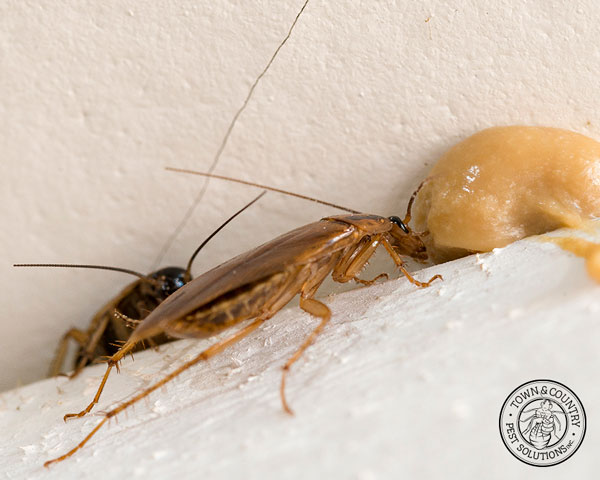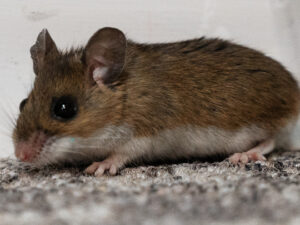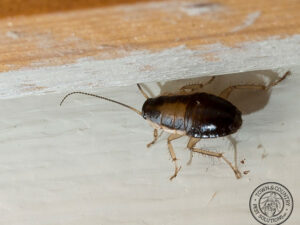
Itchy eyes, a runny nose, and constant sneezing—many of us blame pollen or seasonal changes for these familiar allergy symptoms. But what if the source of your discomfort is hiding within the walls of your own home? Common household pests like cockroaches, dust mites, and even rodents can trigger significant allergic reactions, often without you ever realizing they are there.
Understanding the connection between pests and allergies is the first step toward creating a healthier, more comfortable living environment. These unwanted guests leave behind droppings, saliva, and shed body parts that contain potent allergens. When these microscopic particles become airborne, they can be inhaled, leading to a range of respiratory issues from mild sniffles to severe asthma attacks.
This guide will explore which pests are the most common culprits behind indoor allergies, the specific symptoms they cause, and what you can do to protect your home. By learning to identify and manage these hidden allergy triggers, you can take control of your health and breathe easier all year round.
Common Allergy-Inducing Pests
Several types of pests are notorious for causing allergic reactions. Knowing which ones to look out for can help you pinpoint the source of your symptoms and take effective action.
Cockroaches
Cockroaches are one of the most significant sources of indoor allergens, second only to dust mites. It’s not the insect itself that you need to see to have a reaction; rather, it’s the proteins found in their saliva, droppings, and decomposing bodies that cause problems. These allergens mix with household dust and become airborne when disturbed by activities like vacuuming or sweeping.
Allergic reactions to cockroaches can include:
- Persistent coughing and wheezing
- Skin rashes
- Nasal congestion
- Ear and sinus infections
- Asthma attacks, particularly in children
Because cockroaches are nocturnal and skilled at hiding, you may have an infestation without ever seeing a live one. Telltale signs include small, dark droppings that resemble coffee grounds, a musty or oily odor, and shed skins.
Dust Mites
Dust mites are microscopic arachnids that thrive in warm, humid environments. They feed on the dead skin cells that humans and pets shed daily, making bedding, upholstered furniture, and carpets their ideal habitats. It’s not the mites themselves but their waste particles and decaying bodies that contain the allergenic proteins.
Symptoms of a dust mite allergy are often most noticeable in the morning after spending hours in bed and can include:
- Sneezing and a runny nose
- Itchy, red, or watery eyes
- Nasal congestion and postnasal drip
- Itchy skin or eczema
- Coughing and difficulty breathing
You can’t see dust mites with the naked eye, so their presence is confirmed by the allergic reactions they cause. They are a constant in nearly every home, but their population can be managed.
Rodents
Mice and rats are also major contributors to indoor allergens. Similar to cockroaches, the primary triggers are proteins found in their urine, saliva, and dander (skin flakes). Rodent urine, in particular, contains proteins that break down into tiny particles that easily become airborne as they dry.
An allergic reaction to rodents can manifest as:
- Sneezing fits
- Runny or stuffy nose
- Itchy skin and hives
- Asthma symptoms like wheezing and chest tightness
Signs of a rodent infestation include droppings, gnaw marks on furniture or wiring, nests made from shredded materials, and scratching sounds coming from inside the walls or ceiling.
How to Reduce Pest-Related Allergens in Your Home
Creating an allergy-friendly home involves a two-pronged approach: eliminating existing pests and taking preventative measures to keep them from returning.
Step 1: Deep Clean and Declutter
A thorough cleaning is the first line of defense.
- Vacuum Everywhere: Use a vacuum with a HEPA (high-efficiency particulate air) filter to trap allergens. Pay special attention to carpets, rugs, upholstered furniture, and curtains.
- Wash Bedding Regularly: Wash all sheets, blankets, and pillowcases in hot water (at least 130°F or 54°C) weekly to kill dust mites.
- Reduce Clutter: Pests love to hide in stacks of newspapers, magazines, and cardboard boxes. Decluttering your home eliminates their potential hiding spots.
- Wipe Down Surfaces: Regularly clean kitchen counters, shelves, and floors to remove food crumbs and spilled liquids that can attract cockroaches and rodents.
Step 2: Seal Entry Points
Prevent pests from entering your home by sealing potential entryways.
- Check for Cracks: Inspect the foundation, walls, and windows for any cracks or holes. Use caulk to seal small gaps.
- Secure Doors and Windows: Install door sweeps and repair any damaged window screens.
- Cover Vents: Use mesh screens to cover vents and chimney openings.
- Inspect Pipes: Seal gaps around pipes and utility lines that enter your home.
Step 3: Manage Moisture and Food Sources
Pests need food and water to survive. Eliminating their access can make your home far less inviting.
- Store Food Properly: Keep food in airtight containers, and don’t leave pet food out overnight.
- Fix Leaks: Repair leaky pipes and faucets promptly to reduce moisture, which attracts cockroaches and dust mites.
- Use Dehumidifiers: In damp areas like basements and bathrooms, use a dehumidifier to maintain a humidity level below 50%.
- Take Out the Trash: Use a trash can with a tight-fitting lid and take it out regularly.
When to Call a Professional
While DIY methods can be effective for managing minor issues, a widespread infestation often requires professional intervention. Pest control experts have the tools and expertise to identify the extent of the problem and implement targeted treatment plans that are safe for your family and pets.
If you continue to experience allergy symptoms despite your best cleaning and prevention efforts, it’s a strong sign that you may have a hidden infestation. A professional pest control company can conduct a thorough inspection, locate nesting sites, and apply treatments that eliminate pests at the source. They can also offer advice on long-term prevention strategies tailored to your home’s specific needs.
Take Control of Your Indoor Air Quality
You deserve to feel comfortable and healthy in your own home. By understanding the link between pests and allergies, you can take proactive steps to eliminate these hidden triggers and improve your indoor air quality. Regular cleaning, diligent home maintenance, and professional pest control when needed are all key components of creating a pest-free, allergy-friendly environment. Don’t let unwanted guests compromise your well-being—start taking action today.













